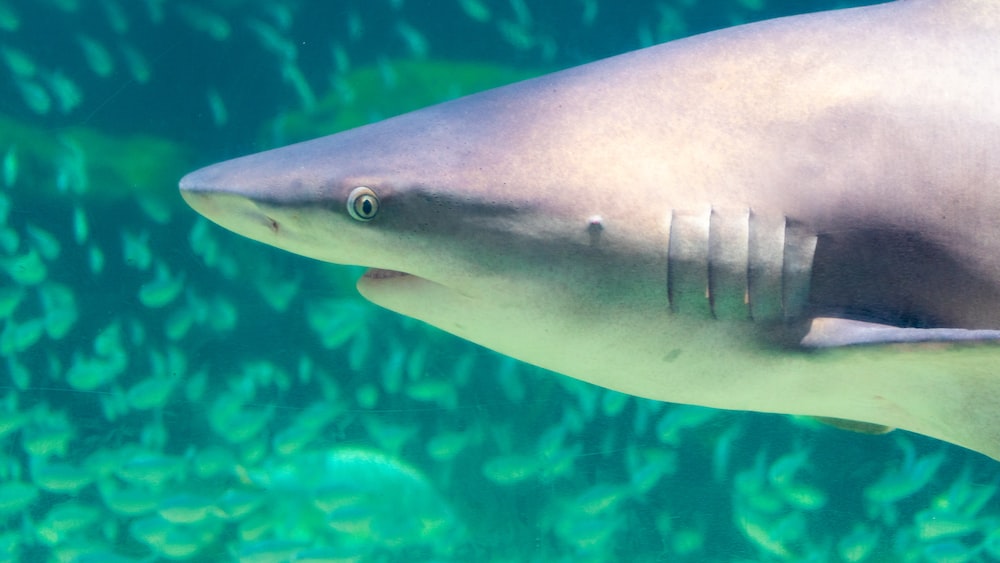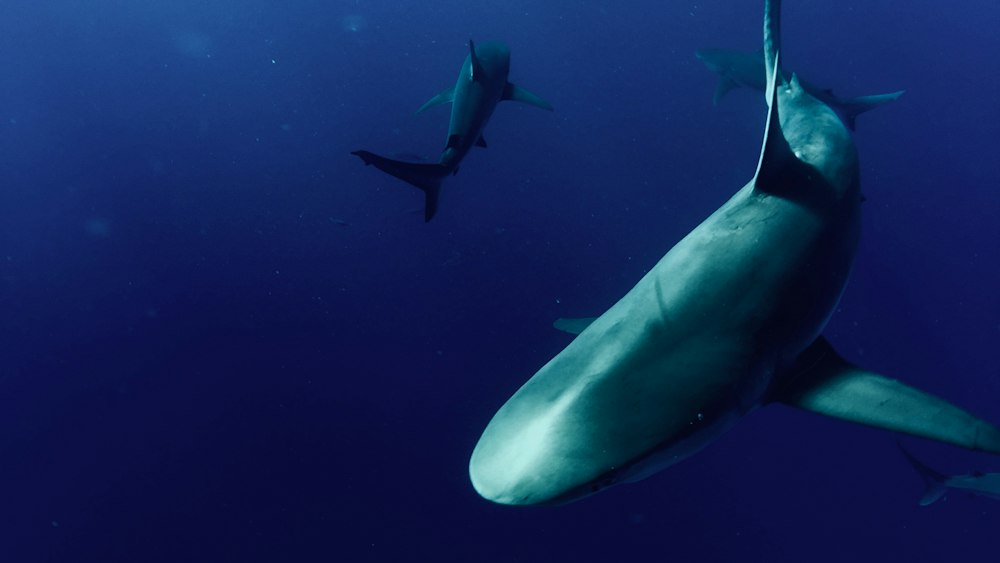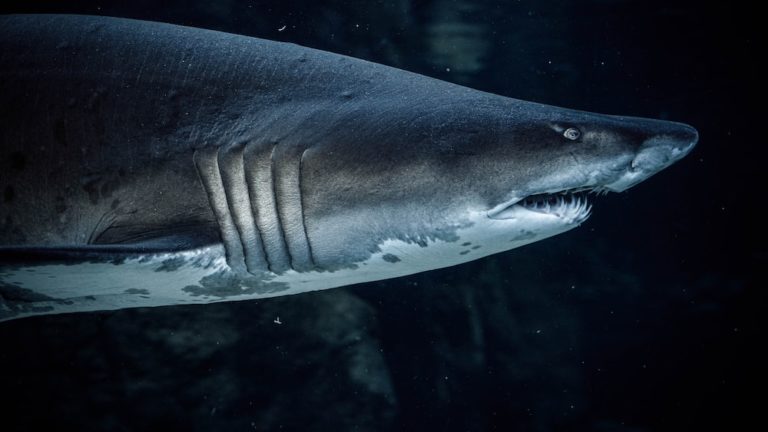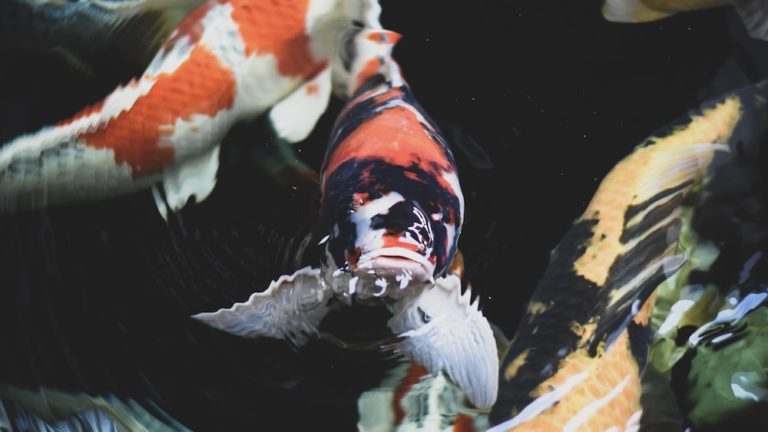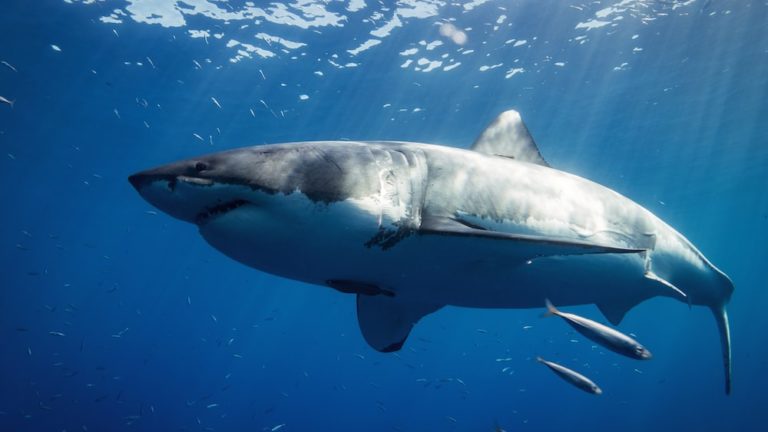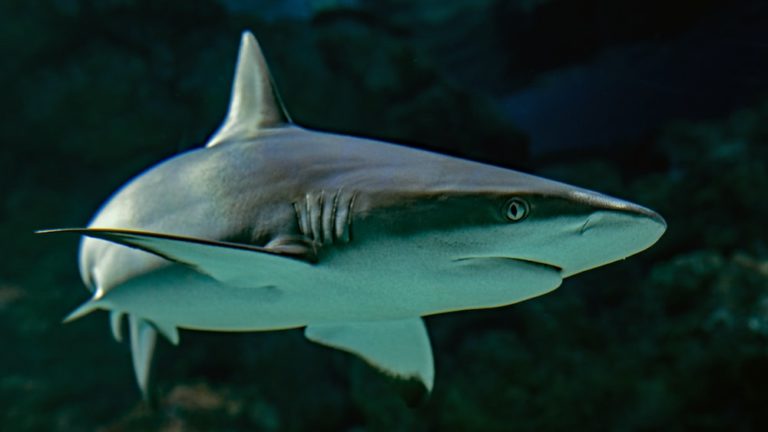Unveiling The Mystery: How Do Sharks Move
Unveiling The Mystery: How Do Sharks Move
Embarking on a journey through the ocean’s vast blue desert, I often marvel at the fluid poetry of shark movement. For marine life enthusiasts, eco-adventurers, and certainly for conservationists like myself, understanding how do sharks move is not just about satisfying our curiosity but about fostering a deeper connection with these misunderstood marine marvels.
Key Points:
- Sharks move with grace and purpose, powered by a combination of anatomical wonders and perfected survival strategies.
- The fins, muscular system, and skin of sharks play crucial roles in their movement, enabling them to navigate the ocean with agility and efficiency.
- The physics of how sharks move is influenced by buoyancy, tail shape, swimming patterns, and breathing mechanics, allowing them to glide through the water with finesse.
- Sharks exhibit diverse behavioral patterns, including long-distance travel, resting strategies, speed and agility in the water, and hunting techniques, all of which contribute to their survival and adaptation.
- Understanding how sharks move is critical for their conservation, as movement patterns can inform habitat preferences, behavior, and the impact of environmental changes.
- Knowledge of shark locomotion can aid in crafting effective conservation strategies, promoting awareness, and inspiring technological advancements, while also dispelling misconceptions and fears about these marine creatures.
Sharks have roamed the oceanic expanse for over 400 million years, their movements honed by evolution into a mesmerizing ballet beneath the waves. Through this piece, prepare to dive beneath the surface into the world of these graceful predators, where science unveils the intricate workings of their locomotion.
Not merely darting shadows in the depths, sharks are the embodiment of refined power and efficiency. As we unfold the enigma of their movement, we immerse ourselves in a story shaped by a combination of anatomical wonders and perfected survival strategies, a dance where every fin and muscle plays its part.
The Anatomy of Shark Movement
Have you ever pondered over the sleek silhouette of a shark as it cuts through the ocean with apparent effortlessness? At the core lies an intricate framework of biological engineering, seamlessly integrated to enable a level of aquatic agility that commands both respect and fascination. Let’s dissect this phenomenon and reveal the blueprint of how do sharks move.
The Role of Fins in Shark Locomotion
The fins of a shark serve as the maestro in the symphony of their movement, each with a crucial role in the aquatic concerto. The dorsal fins, like a ship’s keel, provide stability to prevent rolling, while the pectoral fins act like wings, lifting and turning sharks with surgical precision. When these creatures carve the water, their fins slice with purpose, delivering a masterclass in hydrodynamics.
Consider the tail, or caudal fin, which acts as a propulsive powerhouse. Its asymmetrical lobe design is no fortuitous fluke; the upper lobe, being larger, thrusts the shark forward, while the lower lobe ensures directional control. Together, they are not unlike the oars of a rower, propelling the shark through its watery realm with unyielding potency.
Sharks’ fins play a crucial role in their movement, providing stability, lift, precision, and propulsion, akin to a symphony conductor coordinating a performance.
Muscular System and Propulsion
Muscles ripple beneath the skin of these sleek predators, their myofibrils contracting in perfect harmony to forge movement. Sharks have two key sets of muscles, the red and white fibers. The red, designed for long-distance journeys, lean on the stamina side, the marathon runners of the muscular realm. The white, powerful sprinters, bestow burst of speed, vital for the ambush hunter’s sudden strike.
This muscular system interlocks with the resilient vertebral column, a dynamic duo enacting the shark’s propulsion. A single undulation of the body, powered by this muscular orchestra, sends ripples of motion from head to tail, transforming energy into the forward motion – a display of power wrapped in silence, as suited for the pensive hunter.
Shark Skin: More Than Just a Covering
At first brush, shark skin feels as if one has grazed against a rough, sandpaper-like substance. But within each tiny tooth-like scale, called dermal denticles, lies a microcosm of hydrodynamic proficiency. These scales, with their ridges and grooves, reduce turbulence, allowing sharks to pass through water with minimal resistance.
Beneath these denticles lies a matrix of fibrous connective tissue, giving their covering sheer strength and elasticity. Elegantly, their skins double as an exoskeleton of sorts, providing musculature anchoring points critical to their snaking movement. The result? An entity that silently knifes through waters with unmatched ease, their skin a testament to nature’s prowess in design.
The Science Behind Shark Swimming Dynamics
The physics of how these ocean denizens glide might not be immediately obvious, yet the deeper one delves, the more the principles of fluid dynamics and biomechanics illuminate the mastery behind their motion. Venturing beyond their skin and muscles, we encounter the invisible forces that mold their path through Neptune’s kingdom.
Buoyancy and Weight Distribution
Shark anatomy presents a paradox – they’re heavy yet buoyant, and this delicate dance of gravity and lift is a cornerstone of their locomotive science. Cartilaginous skeletons, lighter than bone, tilt the scales toward buoyancy, while large, oil-filled livers act as natural floatation aids, a kind of biological life jacket.
To counteract the upward push, sharks distribute weight along their bodies via dense muscles and heavy vertebrae, creating a neutral buoyancy. In essence, they exist in a state of permanent suspension, neither sinking nor floating, free to roam the ocean depths with enviable grace.
Mastering the delicate balance between gravity and lift is crucial for sharks’ graceful underwater movement and can serve as a metaphor for finding equilibrium in life.
Tail Shape and Swimming Patterns
The tail fin of sharks, ornately crafted by evolution, comes in various shapes, each fine-tuned for their lifestyle. The crescent moon tails of the swift mako allow blistering speeds, while the broad, slow-beat tails of nurse sharks optimize for a benthic existence. A shark’s tail is poetically akin to the sails of a ship; each form magnifies its ecological niche, directing its journey across the marine tapestry.
Their swimming patterns are further nuanced by individual tail morphologies. Some sharks favor steady cruising, the undulations of their body methodically metronomic. Others, however, pulse through the water in fast, frenetic bursts, their tails cutting a thunderous tempo across calm seas. Whether cruising or darting, these patterns depict a finely tuned marriage of form and function.
Breathing Mechanics and Movement
When pondering on sharks, one might not immediately consider their respiratory prowess. However, the elegance with which they extract life-giving oxygen from the water as they glide is every bit as refined as the glistening contours that shape their form and consequent movement.
Ram Ventilation Explained
Venturing deeper, let us delve into the breath of the sea as practiced by these streamlined swimmers. Ram ventilation is the aquatic breath of choice for many an oceanic voyager, a technique where sharks harness their forward motion to push water through their open mouths and over their gills. It’s a clever spin on multitasking – moving and breathing in one fluid practice.
But this technique demands constant motion for oxygen; to cease moving is to suffocate. Here, the mysterious wanderers of the deep find an elegant solution: locomotion intertwined with the essence of life. Their undying impetus to roam the open ocean is mirrored in their physiological need to do so.
How Sharks Breathe While Resting
Now, I can hear the collective curiosity crescendoing: If sharks must move to breathe, how do they rest without the embrace of a watery grave? Well, some utilize smart adaptations like spiracles, small openings behind the eyes that pump water over the gills, a serene respite for the weary traveler.
Other species simply locate regions where the ocean current plays the role of respiratory aide, whisking fresh water through their gills while they remain motionless. It’s quite the spectacle, witnessing these apex predators employing their environment for a moment of peaceful suspension in their otherwise relentless sojourn.
Behavioral Patterns of Shark Movement
Within the confounding depths of our oceans swims a tapestry of shark species, each with unique behavioral patterns that can range from the intricate to the astonishing. As we venture through these saltwater narratives, we glimpse an array of movements that paint the picture of shark life.

Migration and Long-Distance Travel
Sharks are the nomads of the deep blue, their life an endless voyage across a liquid highway stretching beyond the horizon. Some species, like the great white, undertake epic migrations, traversing entire oceans in pursuit of prey or breeding grounds. These long-distance travels are the stuff of marine legend, netting thousands of miles in a single journey.
They navigate with a celestial sense that rivals ancient mariners, using the Earth’s magnetic fields as a map woven into the fabric of their being. These migrations are not wandering gambles but purposeful treks ingrained in their DNA, an intrinsic push in the quest for survival. Oftentimes, it’s a seasonal rhythm, a grand, cyclical dance choreographed by the tilt of our planet and the shifting of its currents.
Sharks undertake epic migrations across oceans, navigating with a celestial sense and using the Earth’s magnetic fields as a map woven into the fabric of their being.
Resting Strategies: Do Sharks Ever Stop Moving?
Have you ever seen a shark lounging in a hammock? Probably not, because sharks, unlike us, don’t need a timeout in the classic sense of a nap. Most sharks must keep swimming to breathe; it’s like they’re signed up for a perpetual marathon without the fanfare. They do this by using a method called ram ventilation, where they swim with their mouths open to let water flow over their gills.
However, some species have a neat trick up their sleeve, or should I say gill? These clever swimmers come equipped with spiracles, little openings located just behind the eyes. These act like snorkels, allowing sharks to pull in water while they’re taking it easy on the ocean floor. Resting for these sharks means they can be stationary without turning into shark statues. It’s a fantastic adaptation that lets bottom-dwellers like the nurse shark take a breather, so to speak.
As for the sharks that don’t have spiracles, they’ve adapted to sleep swim – a low-energy cruise control. Their bodies are literally designed to keep going like a hybrid car, using minimal energy to perform the necessary function of passing water over their gills. So, in a way, sharks do stop moving in the sense of reducing activity, but stopping altogether? That’s off the table, or off the reef, in their case!
Speed and Agility in the Water
There’s a reason the sleek form of a shark takes the prize in marine dynamics – speed and agility are the names of the game in their watery realm. Sharks have evolved to be the star athletes of the ocean, moving through the water with finesse that would leave Olympic swimmers in awe. They twist, turn, accelerate, and glide using a combination of powerful muscles and their streamlined bodies, which are shaped by nature for Olympic-level performances in the deep blue.
The Fastest Shark Species
When it comes to speed demons of the deep, the shortfin mako shark takes the cake, or the seal, as it were. Clocking in speeds of up to 60 miles per hour, this shark could give most speedboats a run for their money. Another notable mention is the graceful but swift blue shark, known for its lithe body and lightning-quick moves, especially when there’s a meal on the line.
Not far behind in the speed stakes is the infamous great white shark, sailing through the water at a brisk 25 miles per hour when it’s on the hunt. Powerful tail fins act as propulsive force multipliers, catapulting these sharks forward like torpedoes with teeth. The speed of these apex predators isn’t just for thrills; it’s a vital part of their survival toolkit, enabling them to roundup fast-moving prey with shocking precision.
Among these aquatic speedsters is the graceful hammerhead shark, whose widened head, known as a cephalofoil, acts like a rudder, giving them unrivaled maneuverability. Whether it’s a rapid chase or a sudden 180, speed in sharks isn’t just impressive, it’s crucial. Each species has its own personal best when it comes to nautical sprints, and these are just a few of the ocean’s swiftest sharkeletes.
Maneuvering and Hunting Techniques
The hunting prowess of sharks is not solely reliant on their speed; nimble maneuvering plays a pivotal role as well. The hammerhead shark, with its unique T-shaped head, can make sharp turns to outmaneuver prey. Its wide-set eyes give it an impressive visual range, perfect for spotting a quick snack.
Then there’s the thresher shark, known for its elongated tail fin which it uses like a whip to stun prey, a technique as unique as it is effective. Group hunting strategies are also employed by species like the scalloped hammerhead, where teamwork can mean the difference between a successful hunt and an empty stomach.
While speed might win the race, in some cases, stealth is the winning tactic. Some sharks employ slow, methodical stalking that culminates in a burst of speed, blindsiding unsuspecting prey. Remarkably adaptable in their hunting habits, sharks can switch gears from slow and stealthy stalker to quick and decisive attacker in an instant, showcasing their mastery of movement within their liquid environment.
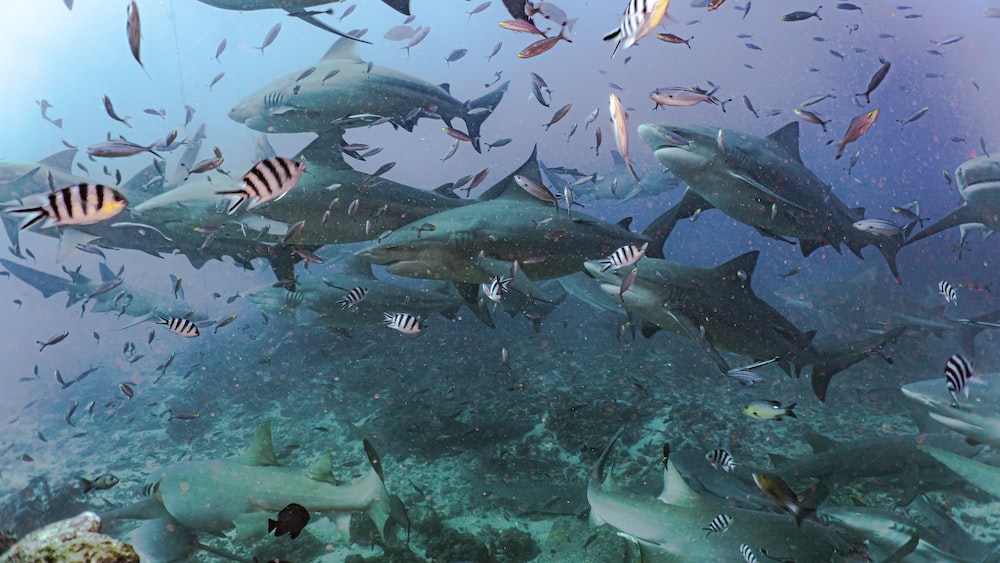
Conservation and the Impact of Movement
Understanding how sharks move isn’t just a matter of satisfying curiosity; it’s critical for their conservation. Movement patterns of sharks can tell us a lot about their behavior, habitat preferences, and the challenges they face in an ocean that’s changing more rapidly than ever.
How Movement Patterns Affect Shark Survival
The movement of sharks is intrinsically linked to their survival, so much so that you could call it a dance with destiny. Migratory patterns guide sharks to breeding grounds and bountiful feeding areas, ensuring they can keep their species going strong. Moreover, these patterns help sharks avoid predators – or become the predator themselves – based on seasonal changes.
Another critical aspect is the use of habitat spaces. Sharks do not meander aimlessly; their movement is purposeful, using deep-sea ledges, coral reefs, and open waters each for different aspects of life – feeding, mating, and pupping.
When it comes to conservation, recognizing these patterns is a cornerstone for creating protected areas and managing fisheries. For instance, when we understand the breeding migrations of the hammerhead shark, we can advocate for the protection of those specific ocean highways during critical times of the year. Subtle shifts in movement can also indicate changes in ocean health or the alarming effects of climate change, compelling us to act before it’s too late.
The Importance of Understanding Shark Locomotion
Diving into the intricacies of how sharks move can unlock mysteries of the deep and aid in their survival. Knowledge of shark locomotion is key for crafting conservation strategies that are both effective and sustainable. It’s through understanding these awe-inspiring creatures and their voyages across immense oceanic expanse that we can tailor protective measures.
For example, by studying the swimming behaviors of the great white shark, we’ve realized the necessity to safeguard their migratory routes, which often cross international waters. Knowledge about shark skin and its drag-reduction properties has even spurred technological advancements in naval engineering, with implications far beyond piscatorial pursuits.
Lastly, by promoting awareness of how sharks maneuver through their aquatic domain, we can confront misconceptions and replace fear with fascination. Educating the public on the elegance and importance of these marine monarchs encourages conservation efforts, ensuring sharks continue to glide through the oceans for generations to come.
Conclusion
Reflecting on how sharks move, we uncover a world of rhythm and flow beneath the waves – a world that’s both poetic and precise. As marine life enthusiasts, eco-adventurers, and conservationists, we’re invited to marvel at the delightful dance of these underwater emissaries. Our exploration into their movement uncovers a symphony of survival, each fin flex and tail thrash an essential note in the ocean’s grand concerto.
It’s a journey of discovery that calls us to protect these vital participants in our marine ecosystems, ensuring their stories – and their movements – continue to unfold. How do sharks move? With grace, purpose, and an enduring significance that ripples throughout their saline stage. They propel not only through the water but also through our imaginations, challenging us to safeguard the marine narratives we cherish.
And as the sun sets on our oceanic odyssey, we’re left contemplating our own role in this vast, swirling seascape. May we always strive to be thoughtful stewards of these ancient marine paths, honoring the sharks that navigate them with such majestic ease. Until next time, may your curiosity about the deep be as endless as the sea itself. Wishing you fair winds and following seas, Jasper Flynn.
